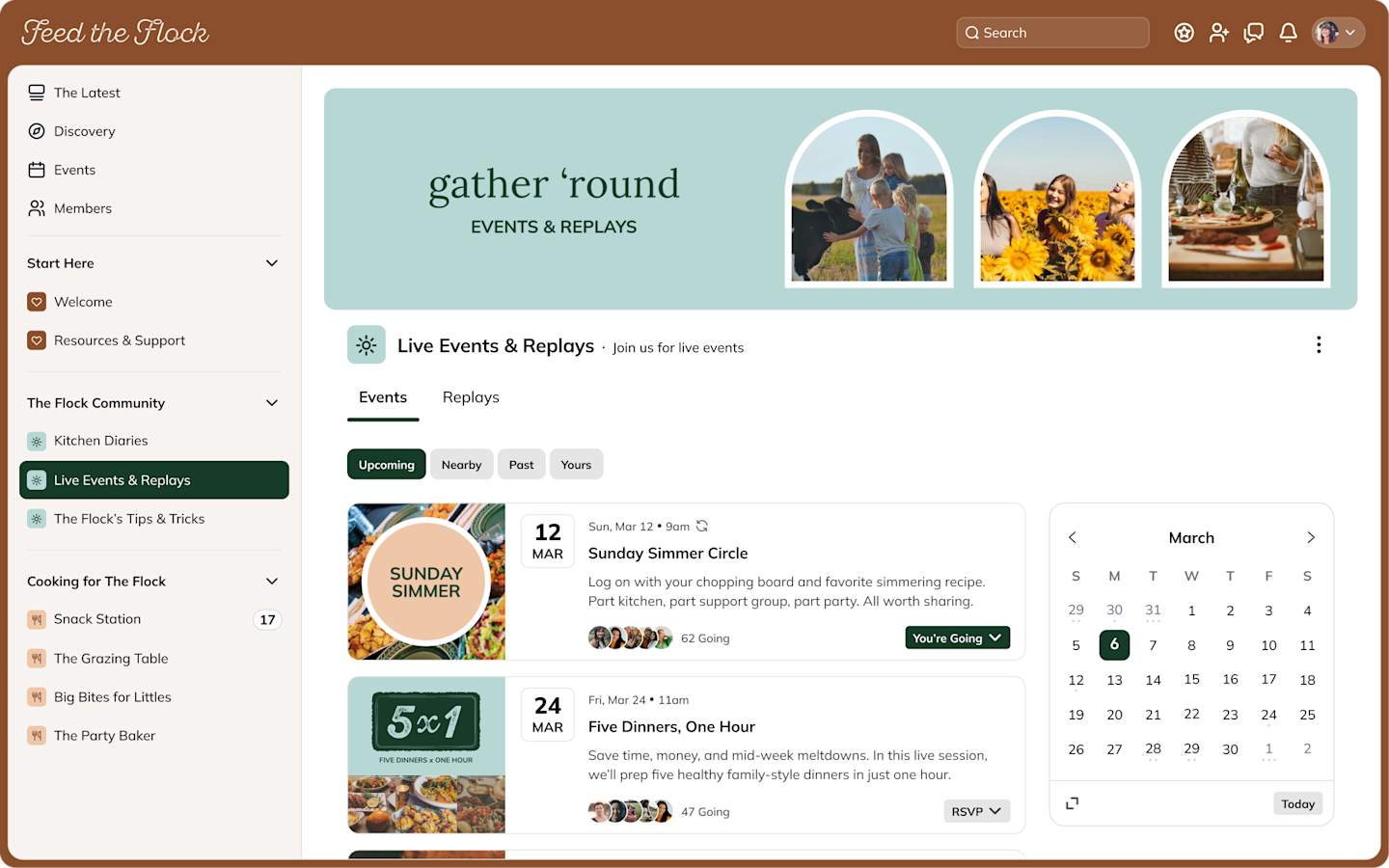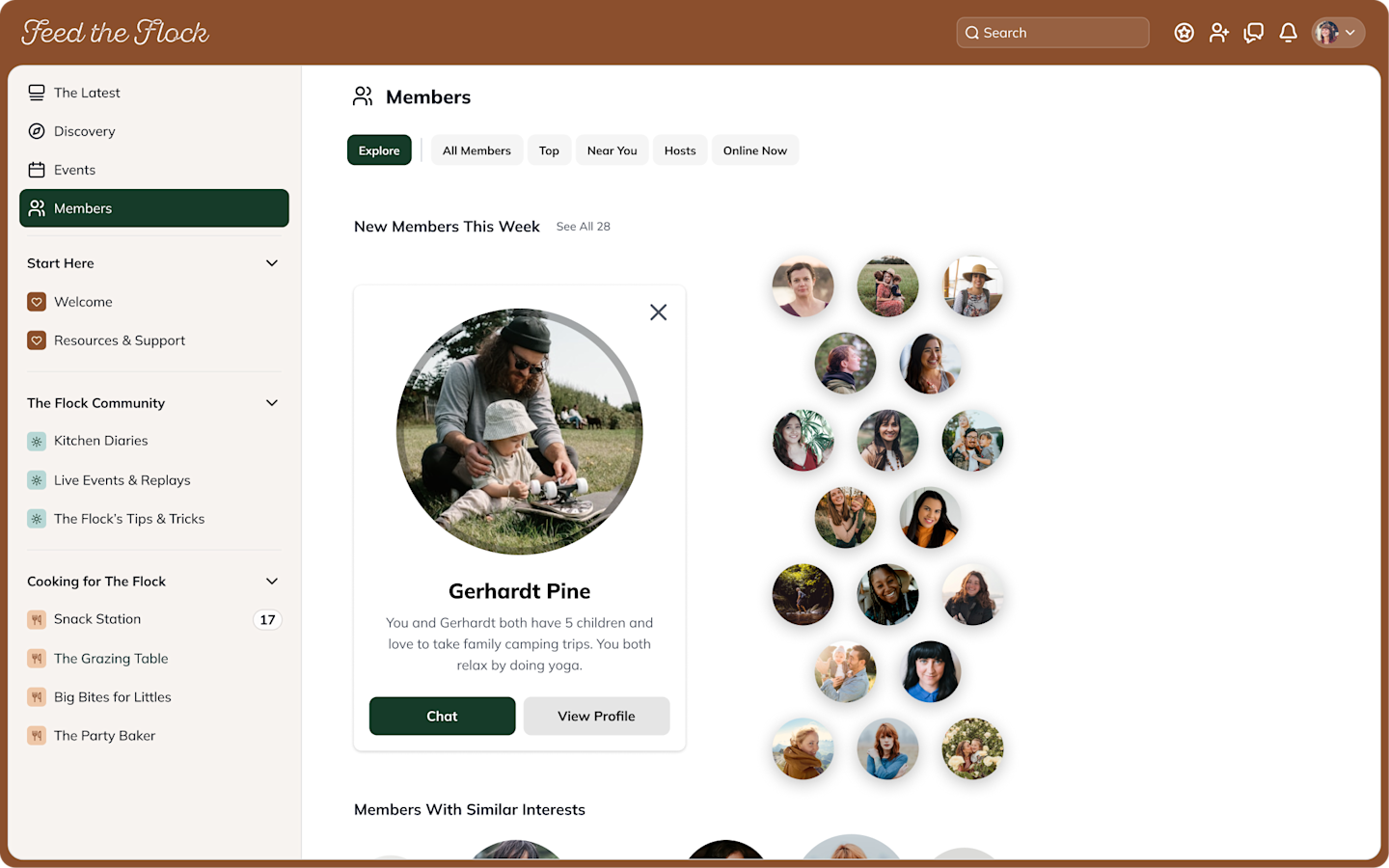Online Courses
How to Price Online Courses (Our 2026 Guide)
Pricing your online courses can be challenging. We’re here to help you figure it out.
Author
Mighty Team
Last Updated
November 30, 2025

Whether you run an online training business or are just starting out, online course pricing is a challenging step in the process.
But understanding how to price your online course doesn’t have to be scary. By taking the time to come up with the right pricing model for your course, you’re valuing yourself and all of your hard work.
Ahead, we’re going to break down some approaches to understanding online course pricing. But before we jump into the tips, let’s look at why online course pricing is important.
If you want more support in building and monetizing your online course and community, come join OUR Mighty Community for free and meet other new and established community owners! We’d love to meet you. Join for free!
Why is online course pricing so important?
Pricing your online course is important because you want to strike a balance between value for your students and value for yourself. What would make this online course worth it for your students? And what would make it worth it for you to do all the work involved in making a course?
Let that soak in for a moment.
When you build an online course, you’re using your ideas, skills, and perspective to give your students the tools to achieve their goals. That is immensely valuable. But many still sell themselves short. Let’s make sure you don’t.
It’s important to get the price right.
This puts you in the challenging position of being like Goldilocks trying to find the perfect price – not too high, not too low, but just right.
There’s no perfect science to this, but we’ll give you some advice.
The psychology of online course pricing
People equate price with value. If you charge too little, they’ll assume it’s worth less than competitors with higher price tags.
People are less likely to complete if they don’t pay. As an annoying extension of that whole equating price with value thing, people are less likely to stick to a course they didn’t pay for. This means fewer completions, less transformation, and fewer happy customers.
You will naturally undersell yourself. The psychology of pricing isn’t just about your customers. You’re working with your own psychology too. And when you sell your first course, it’s normal to feel a bit of imposter syndrome and want to charge less. Resolve this by focusing on the transformation and what it’s worth to your ideal student.
People still want a deal. Even if you’re selling a high-ticket course, people love getting a deal. So people need to pay enough to value the course, but if you can sell it to them at a discount, they’ll get a rush of dopamine. Aren’t humans weird?
People have FOMO. That’s Fear of Missing Out. When we see words like "Last Chance to Save" or "Access Closes at Midnight," we’re naturally more inclined to pull out our wallets. Many creators say they sell the most courses in the final hours of a promotion.
Myths about pricing your online course
If I keep the price really low, I’ll sell more!
Actually, there’s not much correlation between a lower price and more sales. People are less likely to value the course, they may not take it seriously (people equate price with value). Plus, any course has a limited reach and market. Price it high enough to make it worth your time, even if you don’t sell millions.
The only way to make more is to charge a higher price.
Actually, there are a bunch of different ways to build a viable course business model. You might charge a lower price on the course, but bundle in access to a community. You could upsell with coaching and or consulting. There are more ways to increase your revenue than just raising the purchase price.
People will pay more for a “professional” course.
We’re not saying that you shouldn’t be as professional as you can be. But you don’t have to hire a videographer and build a studio to have a high-ticket course. People pay for the transformation, not for fancy lighting.
People will buy because you create the perfect sales pitch.
Again, there’s nothing wrong with having good copywriting or a well-written sales page. But the value of the course comes from transformation. If you deliver that, you’ll have raving word-of-mouth fans that are worth more than a perfect sales page.
I should charge less than my competitors.
Charging less works when you’re Walmart and people don't care what brand of canned peas they buy. But your online course pricing can’t be a race to the bottom. Remember that we said people equate price with value? If you charge less, you could be sending the signal that it’s worth less. Set a price that’s comparable to your competitors, and even consider going a bit higher.
How to price online courses (8 tips)
1. Name the value of the transformation
We talked about this above, but step 1 is to learn the value of the transformation to your Ideal Students. So come back to these questions and see if they give you a sense of what the value you’re offering is.
How much would they have to pay for this transformation without a course? (e.g. Would they have to hire a coach or take a college course?)
How much is the transformation worth to their life? (e.g. Will they earn more on their paycheque or through their business?)
How much time will it save them? (e.g. Would it take them a week to learn it on their own, or a year?)
How significant is the transformation? (e.g. Is the course teaching them a simple skill, or a whole system that’s going to change the rest of their life?)
Answering these questions can add some clarity, and hopefully, also illustrate why it’s so tough to give a one-size-fits-all answer to course pricing. There’s a difference between a course on Excel shortcuts and a masterclass in starting a $1 million business.
2. Research competitors
We mentioned this above too, but researching competitors is important.
If you’re wondering how to price your online course, it’s important to research what other people are doing. When you understand what your competition is charging, you can plan your online course pricing more accurately.
Don’t view this so much as figuring out what price you need to charge to undercut your competitors. This is more about having a lay of the land for what students are willing to pay for the online course you’re offering.
Also, seeing what others are doing is a great way to inspire your own content!
3. Consider what you want
The first step for pricing your online course is deciding what your baseline price will be. Figuring out your baseline price is important for a number of reasons, but here are two questions we think are most important:
What price would make you happy? This might seem like an odd question to ask, but it’s not. If you’re trying to make money running an online course, then you need to know your worth. Or more importantly, what’s worth it for you? When thinking about how to price your online course, you’re also asking how much money you deserve for the amount of work you’re putting in. This will be different for everyone.
What kind of online course are you trying to build? Your baseline price should reflect your vision for the course. Are you imagining a small course with a super-invested, tight-knit group of students? Or, are you trying to create a larger group? Maybe you want as many people as possible to take your course with hopes they'll upsell into coaching or consulting. Your vision should help define the price.
Once you can answer these questions, you’re headed in the right direction in pricing your online course.
4. Identify your unique perspective
The online course space isn’t a new field anymore. Many people are in it and offering similar classes. But what sets you apart from the competition is your unique perspective.
When figuring out how to price your online course, take some time to inventory what makes your point of view valuable. Remember, when you build an online course you’re providing people a path to complete goals they couldn’t on their own.

The important distinction to make here is that having a unique perspective doesn’t mean that you need to be an expert on your course topic. You can create a successful online course whether you’re highly accomplished in the field your course is about or you’re simply an enthusiast.
Here are a few questions to ask to identify your unique perspective:
Do you have a unique origin story that might resonate with some people? (e.g. A single mom who wants to start a business on the side.)
Do you have a perspective or identity that’s underrepresented in the current course offerings? (e.g. Underrepresented creatives trying to break into the entertainment industry.)
Do you know a skill that nobody else is talking about? (e.g. Tuft the World teaches the rare skill of rug tufting.)
Do you have an approach to a problem nobody is taking? (e.g. Ryder Carroll using bullet journalling to help find focus in his A.D.D..)
When you narrow down why your perspective is unique, you’ll have a much clearer picture of how to price your online course.
5. Set income goals for yourself
When you run an online course it’s easy to only think about helping your students achieve their goals. But yours are important too!
Another great way to help decide online course pricing is to know what you would like to achieve. When you have a goal in mind for how much you’d like to make from your online course, you can set a price that will help you reach it.
For example, let’s say you wanted to make $4,000 from your online course and replace your monthly income. If you charged $50 for your online course, you’d need 80 students to meet your goal. And if you charged $100, then you’d only need 40 students. You get the idea.
Setting income goals lets you be realistic about what you can charge, and lets you have an honest look at your audience.
For example, if you’re a relatively unknown creator with almost no audience and a 10,000-a-month income goal, selling a course for $10 might be a tough slog. Are you going to sell 1,000 courses a month? Is that realistic?
But if you created an amazing course and offered it for $499, you’d only need 20 students a month to make it work… PLUS you could focus a lot more on their success. (If you have 1,000 students a month you might spend a lot of your time doing tech support.)
What we’re getting at is pricing your online courses isn’t just a tool to entice potential students. You can also charge in a way that helps you reach your income goals and control class size.
6. Experiment with new offerings
As more people join your online course, you can rethink your online course pricing by adding new features. If you were building an online course for the first time, it’s understandable that you focused on creating educational content that helped students achieve their goals.
But after you’ve gotten some reps under your belt, consider experimenting with new offerings. When you offer new features in your online course it increases its value and allows you to rethink how to price your online course.

If you’re wondering what types of features you could add, here are a few to consider:
Hosting a monthly live Q&A. A great way to encourage more student engagement is to offer a chance for them to ask you questions live. Consider posting on your discussion board a call for questions. Then, you can hold a monthly live stream in your community where you answer the questions posed by students.
Offer online coaching. Another great way to rethink online course pricing is to offer opportunities like online coaching. This gives you a chance to meet with students one on one (or in small groups) and addresses their personal questions and goals in a more intimate setting. On top of that, it allows you to build deeper connections with your members.
Create a paid membership group. Another great avenue to consider in your online course pricing is a paid membership group. This group can be for students who are looking for help on more specific topics pertaining to the online course. Or it could simply be a community space that is added to the course. This is a great option to continue the longevity of your students’ engagement once they’ve completed your online course content.

These are only the tip of the iceberg for features you could consider adding, but they are a good start. At the end of the day, adding new experiences to your online course will reengage existing students and entice new ones to join.
7. Mix courses and community

Adele Shaw had a growing social media following dedicated to teaching people a more holistic way of training horses – that relied on training the trainers too. She tried to keep up with the questions coming into her inbox, but was struggling.
She finally launched a Mighty Network that brought it all together, complete with a $349.99 course teaching students everything they need to train horses with her method.
Adele also has a Student Membership, where members can join the community for $35.99/mo, and a Mentorship Group that functions like a mastermind, for $120.99/mo.
The awesome thing about Adele’s story is that she shows how mixing a community with courses creates something for everyone, BUT also creates a more diverse revenue stream. For those who can’t afford or aren’t ready for the course, the membership gives them a way to get engaged and learn for a lower price. When they’re ready, they can buy the course.
Offering tiered pricing gives your Ideal Students options, and gives you multiple ways to serve them – which is awesome!

8. It’s easier to go down, not up
It’s much easier to start with a higher price for your online course than a lower one. Why? Because if you decide you want to change your online course pricing, reducing the price of a course is much more effective than raising it.
This goes back to our idea about starting with a higher baseline price. When you start high, it gives you an idea of what your potential student’s threshold is for paying for an online course.
For example, if people were willing to pay for your online course at $250, then it would only make sense that if you reduced it to $150 that you would get more potential students to opt-in. At a higher price, you can offer move involvement through live content and private coaching. At a lower price, you can be a little more hands-off by utilizing pre-recorded content to reduce your workload while increasing your class size.
On the other hand, if you flipped that scenario and raised the price by $100 dollars you probably wouldn’t see many gains and you might actually lose students in the process. In short, people aren’t going to complain about a discount, but they certainly will be turned off by a price hike.
The Mighty online course pricing strategy
We’ve talked a lot about how to create diverse revenue streams in your online courses, from selling community, coaching, a mastermind, bundles, and more. In this video, Heather Ramirez breaks down exactly how a Mighty Network lets you do this!
It’s a fantastic way to create a diverse revenue stream with your online course and to customize your monetization in a way that fits your audience.
Ready to start?
We’ve explored a few ideas to help answer how to price your online course. But the most important thing you need to do is get the ball rolling.
When you’re determining your online course pricing it’s important to remember that your needs are just as important as your students’. Take the time to think about these questions:
Why are you jumping into online course development?
What do you hope to get from offering an online course?
How involved would you like to be in your online course?
Once you’ve thought through these questions and the ideas noted above, you’ll be in a great place to get started.
We can’t wait to see what kind of online courses you’ll make.
Ready to start building your online course?
Ready to start building your community?
Start a free 14-day trial to explore Mighty—no credit card required.
More like this
Join Mighty Community
Learn the principles of Community Design™ (and see them in action) alongside thousands of creators and entrepreneurs. It's free to join!

Online Courses
Creating a Course
Teaching a Course
Course Platforms
Selling a Course
Communities & Memberships
Community Platforms
Managing a Community
Building a Community
Growing a Community
Monetizing a Community
Content Creation
Creators & Entrepreneurs
Monetization
Content Creation
Starting a Business
Website Builders
Creating & Managing a Website
Events
Event Platforms
Hosting & Marketing Events
Branded Apps
Creating a Mobile App
Coaching Apps
Community Apps
Coaching
Mastermind Groups
Starting a Coaching Business
Coaching Platforms
Filter by Category
Online Courses
Communities & Memberships
Creators & Entrepreneurs
Events
Branded Apps
Coaching
Build a $1 Million Community
This free masterclass went viral—sign up to learn why.

























